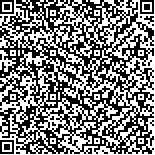本文已被:浏览 900次 下载 538次
Received:May 09, 2019 Published Online:March 20, 2020
Received:May 09, 2019 Published Online:March 20, 2020
中文摘要: 目的 探讨黄芪注射液联合亚低温对急性脑梗死溶栓术后缺血再灌注患者脑保护作用。方法 纳入2015年3月至2018年11月收治的74例急性脑梗死阿替普酶溶栓治疗患者,随机分为2组,各37例,对照组溶栓后采用亚低温治疗,治疗时间72 h;观察组溶栓后采用黄芪注射液20 ml静脉滴注联合亚低温治疗,治疗2周为一疗程。比较两组患者临床疗效、超氧化物歧化酶(SOD)、丙二醛(MDA)及白介素-1β(IL-1β)、肿瘤坏死因子-α(TNF-α)水平,同时记录不良反应状况。结果 对照组有效率为78.38%,低于观察组的94.59%,差异具有统计学意义(P<0.05)。两组患者不同时间点血SOD、MDA及IL-1β、TNF-α比较,差异无统计学意义(P>0.05)。溶栓后1 d时对照组和观察组SOD为(53.69±12.30)U/ml、(60.25±11.57)U/ml,MDA为(11.34±2.06)nmol/ml、(10.02±1.87)nmol/ml,IL-1β为(88.16±14.85)ng/L、(77.32±16.35)ng/L,TNF-α为(58.31±12.45)ng/L、(50.02±13.60)ng/L,溶栓后2周时对照组和观察组SOD为(92.47±16.82)U/ml、(107.83±17.59)U/ml,MDA为(7.68±1.65)nmol/ml、(6.32±1.56)nmol/ml,IL-1β为(41.02±13.07)ng/L、(32.61±12.59)ng/L,TNF-α为(26.21±10.79)ng/L、(17.48±10.41)ng/L,对照组和观察组上述指标比较,差异具有统计学意义(P<0.01)。对照组不良率(13.51%)与观察组不良率(18.92%)比较,差异无统计学意义(P>0.05)。结论 黄芪注射液联合亚低温对急性脑梗死患者溶栓术后缺血再灌注有改善作用,与抗氧化应激和降低炎症因子有关,且患者可以耐受。
中文关键词: 黄芪注射液 亚低温 急性脑梗死溶栓术 缺血再灌注 脑保护;炎症因子;氧化应激
Abstract:Objective To investigate the protective effect of Astragalus injection combined with mild hypothermia on the brain of patients with acute cerebral infarction after thrombolysis. Methods A total 74 patients with acute cerebral infarction who were treated with ateplase thrombolysis from March 2015 to November 2018 were randomly divided into control group and observation group (n=37, each). The control group was treated with hypothermia after thrombolysis for 72 hours; the observation group was treated with Astragalus injection 20 ml intravenous drip combined with mild hypothermia after thrombolysis for two weeks. The clinical efficacy, the levels of superoxide dismutase (SOD), malondialdehyde (MDA), interleukin (IL)-1β, tumor necrosis factor (TNF)-α and the adverse reactions were compared between the two groups. Results The effective rate of the control group was significantly lower than that of the observation group (78.38% vs 94.59%,χ2=4.163, P=0.041). There was no significant difference in SOD, MDA, IL-1β, TNF-α between the two groups at different time points (all P>0.05). There were significant differences of SOD, MDA, IL-1β, TNF-α between the control group and the observation group at 1 day and 2 weeks after thrombolysis (all P<0.01). There was no significant difference between the control group and the observation group (13.51% vs 18.92%, P>0.05). Conclusion Astragalus injection combined with mild hypothermia can improve ischemia-reperfusion in patients with acute cerebral infarction after thrombolysis, which is related to antioxidant stress and reduce inflammatory factors, and the patients can tolerate it.
keywords: Astragalus injection Mild hypothermia Acute cerebral infarction Thrombolysis Ischemia reperfusion Brain protection Inflammatory factor Oxidative stress
文章编号: 中图分类号: 文献标志码:A
基金项目:海南省卫生计生行业科研项目(18A200002)
| Author Name | Affiliation |
| LIU Run, WANG Xiao-zhi, YU Hang | Intensive Care Unit, the Second Affiliated Hospital of Hainan Medical University, Haikou, Hainan 570311, China |
| Author Name | Affiliation |
| LIU Run, WANG Xiao-zhi, YU Hang | Intensive Care Unit, the Second Affiliated Hospital of Hainan Medical University, Haikou, Hainan 570311, China |
引用文本:
